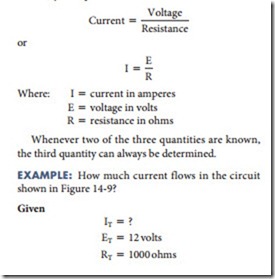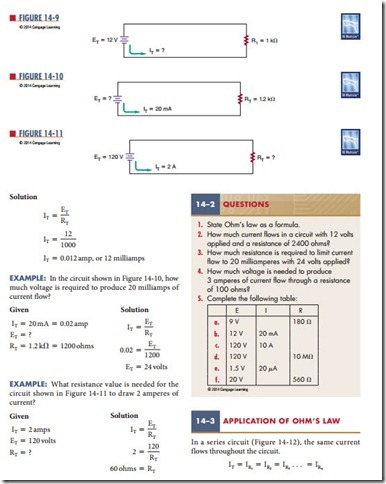Ohm’s Law
In 1827, George Ohm first observed Ohm’s law, or the relationship among current, voltage, and resistance. Ohm’s law states that the current in an electric circuit is directly proportional to the voltage and inversely proportional to the resistance in a circuit. This may be expressed as follows:
Related posts:
Summary of Field effect transistors (Fets)
POLYPHASE MACHINES
Noise and Grounding:Class I and Class II
PSYCHROMETRIC CHART FUNDAMENTALS:DEHUMIDIFICATION AND REHEAT
Cables and Cable Termination:Criteria for Good Terminations And Dangers of Loose Connections
Capacitive AC Circuits:Applications of Capacitive Circuits
Transformer,three phase:Three-Phase Transformer and Three-phase Transformer Connections.
SYNCHRONOUS-MOTOR TROUBLE CHART
Certification for the Electricity and Electronics Field:Basis for Certification
BASIC FRACTIONAL q THREE-PHASE A.C. WINDINGS
Summary of Certification for the Electricity and Electronics Field
Switch principles:AC and DC switching
Preamplifiers and Input Signals:Gramophone Pick-Up Inputs
The Wankel and How It Works

